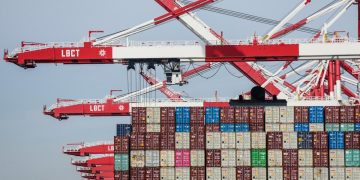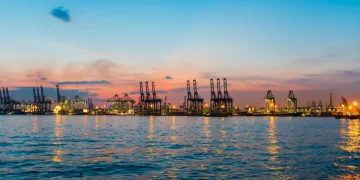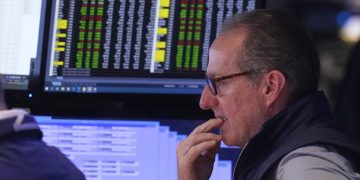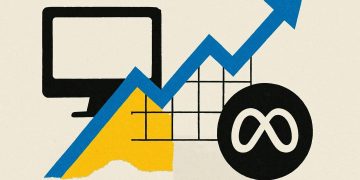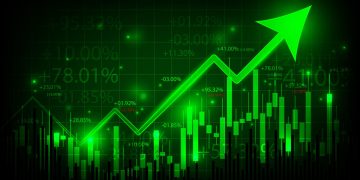Introduction
In early 2025, social media platforms like Reddit and Twitter witnessed an explosive surge in discussions around commodities. Between January and April, mentions of gold, oil, and other key commodities soared by an astonishing 300%. Retail investors, fueled by viral trends and online communities, showed renewed enthusiasm for commodity markets. However, this surge in digital chatter came amid escalating geopolitical tensions, especially in volatile regions such as the Middle East and Eastern Europe. Despite the heightened risks on the ground, retail investors seemed largely undeterred, focusing instead on speculative opportunities. This divergence raises a critical question: Why did the social media-driven enthusiasm for commodities by U.S. retail investors largely overlook the intensifying geopolitical risks that traditionally influence commodity prices?
Understanding this paradox is vital because geopolitical instability typically drives commodity price volatility, affects supply chains, and shapes global economic stability. Yet, the growing disconnection between social media sentiment and fundamental geopolitical realities could be signaling a shift in market dynamics, with important implications for investors, policymakers, and the broader financial ecosystem.
Key Data and Background
The core data underpinning this phenomenon is striking. Social media monitoring firms report that from January to April 2025, keywords related to commodities — including oil, natural gas, gold, and agricultural products — surged by 300% on platforms such as Reddit and Twitter. This heightened online engagement coincided with significant geopolitical events: ongoing conflicts in Eastern Europe, particularly surrounding Ukraine and Russia, and rising tensions in the Middle East involving key oil-producing nations.
At the same time, commodity price behavior painted a complex picture. While oil prices experienced bouts of volatility, overall prices were somewhat contained compared to previous geopolitical shocks. Notably, futures market data revealed increased speculative trading volumes, especially by retail investors entering via online brokers and trading apps. This influx was supported by accessible derivative products such as commodity ETFs and options, allowing retail traders to rapidly express bullish or bearish views.
Energy companies responded cautiously; capital expenditures (CapEx) on oil exploration and infrastructure were notably restrained. According to reports from major oil producers, investment plans in 2025 reflected a “wait and see” stance amid unpredictable geopolitical climates and market volatility. This capital discipline further complicated supply-side responses to potential disruptions.
(See Figure 1: Social Media Commodity Keyword Volume vs. Geopolitical Risk Index, January-April 2025)
The juxtaposition of soaring social media enthusiasm and cautious corporate spending encapsulates the tension at the heart of this analysis.
Cross-Market Impact
The surge in commodity-related social media activity had significant ripple effects across multiple interconnected markets. Firstly, commodity price volatility increased due to amplified speculative trading. Retail investors, driven by online sentiment and viral narratives, contributed to sharp intraday swings and short-term price dislocations. This dynamic echoed episodes such as the 2013 “taper tantrum,” where sentiment-driven trading caused outsized market reactions, though the underlying catalysts differed.
Moreover, energy sector companies adjusted strategies amid this landscape. Capital expenditure caution among oil and gas firms not only constrained supply growth but also influenced broader energy supply chains. Delays or cutbacks in infrastructure development, including pipelines and refineries, reduced medium-term capacity expansion, contributing to supply uncertainties.
This situation also impacted global financial markets. Investors in energy-linked equities and bond markets faced higher risk premiums, reflecting the dual pressures of geopolitical uncertainty and volatile commodity prices. Institutional portfolios increasingly considered geopolitical risk factors in asset allocation models, contrasting with retail traders’ sentiment-driven focus.

Another notable impact emerged in the currency markets. Commodity-exporting nations’ currencies, such as the Canadian dollar and Russian ruble, exhibited heightened volatility linked to both geopolitical developments and commodity price swings. This volatility posed risks for international trade and financial stability, particularly in emerging markets.
Historically, geopolitical crises have prompted risk-off behavior, with investors flocking to safe havens like gold or the US dollar. However, the 2025 pattern showed a more complex interaction, where retail investor exuberance partially offset traditional safe-haven flows, creating a nuanced risk landscape.
Expert Viewpoints and Contrasting Opinions
The divergence between social media-driven commodity enthusiasm and rising geopolitical tensions sparked debate among financial experts.
Goldman Sachs analysts argued that market sentiment had decoupled from underlying risks to some extent. According to their reports, retail investor enthusiasm reflects broader themes such as inflation hedging and portfolio diversification rather than ignorance of geopolitical realities. They suggested that social media conversations amplify interest but do not necessarily translate into irrational pricing, pointing to institutional investors’ dominant role in price discovery.
Contrastingly, independent risk consultants cautioned that social media sentiment might mask deeper vulnerabilities. They highlighted that many retail investors lack access to comprehensive geopolitical intelligence, leading to an underestimation of risks. These experts pointed to recent price corrections as early signs that markets might soon recalibrate when geopolitical tensions further escalate or when real supply disruptions materialize.
Adding nuance, some Nobel laureates in economics questioned the reliability of traditional risk pricing models under conditions of widespread retail speculation. They argued that behavioral biases amplified by social media platforms could introduce new volatility layers, complicating conventional risk assessments.
This debate reflects an ongoing tension between data-driven institutional perspectives and the rapidly evolving, sentiment-driven retail landscape shaped by digital communication.
Future Outlook and Strategies
Looking ahead to 2025 and beyond, multiple scenarios emerge for the interplay of retail sentiment, commodity markets, and geopolitical risks.
An optimistic scenario envisions stabilization of geopolitical hotspots coupled with maturing retail investor behavior. Here, social media buzz might translate into more informed trading, fostering greater market liquidity without excessive volatility. Commodity prices could reflect balanced fundamentals, supporting steady energy sector investments.
A pessimistic scenario involves escalating conflicts disrupting supply chains, leading to sharp commodity price spikes. Retail investors caught off guard by geopolitical shocks might face sudden losses, triggering broader market contagion. Energy supply constraints could exacerbate inflationary pressures, forcing central banks to tighten monetary policies more aggressively.
A middle ground scenario predicts continued market volatility driven by a tug-of-war between retail sentiment and geopolitical realities. In this context, sophisticated investors might capitalize on dislocations, while policymakers focus on enhancing transparency and monitoring speculative risks.
For investors, actionable strategies include:
- Monitoring key geopolitical risk indicators alongside social media sentiment metrics.
- Diversifying portfolios to include both commodities and hedging instruments.
- Staying informed on evolving regulatory responses aimed at curbing speculative excesses.
By integrating traditional fundamental analysis with new data sources from social platforms, investors can better navigate this complex environment.
Conclusion
The 2025 surge in US retail investors’ social media interest in commodities, despite mounting geopolitical risks, underscores a fundamental shift in market dynamics. While online enthusiasm fuels speculative activity and increased liquidity, it simultaneously risks underestimating real-world threats that influence commodity supply and prices. This evolving disconnect challenges investors and policymakers alike to rethink risk assessment frameworks and adapt strategies.
As geopolitical tensions persist, the pressing question remains: Will social media-driven market enthusiasm eventually align with, or continue to diverge from, the underlying geopolitical risk realities shaping the global commodity landscape?

